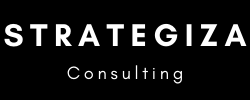Marketing Forensics
How to Use Scarcity and Urgency in Ecommerce
-
Table of Contents
How to Use Scarcity and Urgency in Ecommerce

In the world of ecommerce, competition is fierce. With countless online stores vying for the attention of consumers, it’s crucial to leverage every possible strategy to drive sales and customer engagement. Two such strategies are the principles of scarcity and urgency. When used effectively, these psychological triggers can significantly boost your ecommerce success.
Understanding Scarcity and Urgency
Scarcity and urgency are psychological principles that influence consumer behavior. Scarcity refers to the perception of a product being in limited supply, which can increase its perceived value. Urgency, on the other hand, creates a sense of time pressure, encouraging customers to act quickly to avoid missing out.
Why Scarcity and Urgency Work
Scarcity and urgency work because they tap into basic human instincts. The fear of missing out (FOMO) is a powerful motivator, and when people believe they might miss out on a good deal, they’re more likely to make a purchase.
- Scarcity: When something is scarce, it’s perceived as more valuable. This is known as the scarcity principle. For example, if a product is limited edition or only a few items are left in stock, customers may feel compelled to buy it before it’s gone.
- Urgency: Urgency creates a sense of time pressure, which can motivate customers to act quickly. This can be achieved through limited-time offers or countdown timers.
How to Use Scarcity in Ecommerce
There are several ways to incorporate scarcity into your ecommerce strategy. Here are a few effective methods:
- Stock Levels: Displaying low stock levels can create a sense of scarcity. For example, stating “Only 3 items left in stock” can encourage customers to make a purchase.
- Limited Edition Products: Offering limited edition products can also create scarcity. These products are perceived as unique and valuable, which can drive sales.
- Exclusive Offers: Providing exclusive offers to certain customers (e.g., newsletter subscribers) can create a sense of scarcity and exclusivity.
How to Use Urgency in Ecommerce
Like scarcity, there are several ways to incorporate urgency into your ecommerce strategy:
- Limited-Time Offers: Limited-time offers create a sense of urgency as customers must act quickly to take advantage of the deal.
- Countdown Timers: Countdown timers can be used to show how much time is left for a particular offer, increasing the sense of urgency.
- Fast Shipping: Offering fast shipping for a limited time can also create urgency, as customers may be more likely to purchase if they know they can receive their items quickly.
Case Study: Amazon
Amazon is a prime example of a company that effectively uses scarcity and urgency. They often display low stock levels and use countdown timers for deals, creating a sense of urgency and scarcity that encourages customers to make a purchase.
Statistics on Scarcity and Urgency
Research supports the effectiveness of scarcity and urgency in ecommerce. According to a study by MarketingProfs, products with scarcity messages (e.g., “only 2 left in stock”) had a 9% higher conversion rate than those without. Similarly, a study by Experian found that emails with urgency in the subject line had a 14% higher click-through rate and a 59% higher transaction-to-click rate.
Conclusion
Scarcity and urgency are powerful tools in ecommerce. By creating a sense of limited supply or time pressure, you can motivate customers to act quickly and increase your sales. Whether you’re displaying low stock levels, offering limited edition products, or using countdown timers, these strategies can significantly boost your ecommerce success.
However, it’s important to use these strategies ethically and honestly. Misleading customers with false scarcity or urgency can damage your brand’s reputation. Always be transparent and honest with your customers, and use scarcity and urgency to enhance their shopping experience, not manipulate them.
In conclusion, scarcity and urgency are effective strategies to drive sales and customer engagement in ecommerce. By understanding these principles and implementing them in your online store, you can leverage the power of FOMO and boost your ecommerce success.
